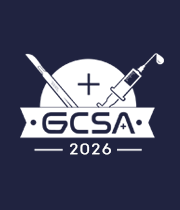Augmented Reality and Virtual Reality in Surgical Training
Emerging technologies like augmented reality and virtual reality in surgical training are transforming how future surgeons gain hands-on experience. VR simulations offer lifelike procedural practice in risk-free settings, enhancing spatial awareness and technical precision. Augmented reality overlays real-time data or anatomical guidance during procedures, bridging the gap between theoretical knowledge and clinical application. These tools are particularly valuable in complex fields such as neurosurgery or orthopedics, where visualizing depth and precision is crucial. Integration into curricula enables repeatable practice, performance assessment, and remote collaboration. By reducing the dependence on live case exposure alone, these technologies democratize access to high-quality surgical education and support a new era of competency-based learning.



Title : Spontaneous colonic perforation in a pediatric patient with acute febrile lllness: A case report
Abhiraj Yadav, Manipal College of Medical Sciences, Nepal
Title : Unusual cause of small bowel obstructions in infants: A warning letter to parents
Gamal Al Saied, Al-Azhar University, Egypt
Title : From panic to protocol: A ?IP on developing a paediatric breast referral pathway
Neriah Mangion, University Hospital Sussex NHS Foundation Trust , United Kingdom
Title : Improving scrotal examination in male patients presenting with acute abdominal pain: An audit and quality improvement intervention
Maab Elsaddig, University Hospital Lewisham, United Kingdom
Title : Mapping pediatric general surgery training in low and middle income countries: A scoping review
Habba Mahal, University of Alberta, Canada
Title : Improving implementation of enhanced recovery after cesarean section protocol in resource limited setting of Koidu Government Hospital Sierra Leone 2024/25. A quality improvement project from evidence to reality
Hailemariam Getachew, PIH, Sierra Leone